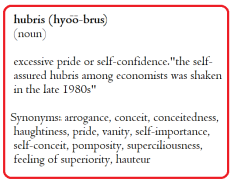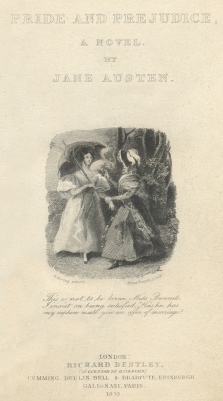Born in 1775, Jane Austen is remembered today for her six novels, the most famous of which is Pride and Prejudice. Austen touched on familiar themes throughout her work, including romance, youth, wealth, and poverty.
 Even today, her humor shines with sharp-edged wit delivered without condescension. Her most memorable protagonists rise above the trivialities of life that absorb the sillier characters.
Even today, her humor shines with sharp-edged wit delivered without condescension. Her most memorable protagonists rise above the trivialities of life that absorb the sillier characters.
Via Wikipedia:
With the publication of Sense and Sensibility (1811), Pride and Prejudice (1813), Mansfield Park (1814), and Emma (1816), in her lifetime she achieved modest success and, as the books were published anonymously, little fame. She wrote two other novels, Northanger Abbey and Persuasion, both published posthumously in 1818, and began another, eventually titled Sanditon, but died before its completion. She also left behind three volumes of juvenile writings in manuscript, the short epistolary novel Lady Susan, and another unfinished novel, The Watsons. [1]
Austen’s work delved deep into the issues women faced, which were not discussed in polite company, and she did it while navigating the shark-infested waters of her society. Her central themes were:
Financial insecurity: The need for a gentlewoman to marry well for financial security rather than love.
Patriarchy: The sure assumption that men know best and the societal value of a man’s opinion as opposed to a woman’s opinion.
Women as property: The value of youth; a young woman is more desirable than an older woman, no matter how intelligent and thoughtful.
Hubris: Pride – and the humbling of pride.
The six published novels deal with social class, gender and society’s expectations, and morality.
What is right, moral, and proper? This theme of honorable morality winds through all her work.
And the other major theme, one opposing honorable morality, is pride. Pride loves power. It is listed as one of the world’s seven deadly sins because pride can become so powerful that it creates its own morality, crushing humility.
 Pride is a powerful theme because it is the downfall of many characters in all literature, not just Jane Austen’s work.
Pride is a powerful theme because it is the downfall of many characters in all literature, not just Jane Austen’s work.
These two themes, pride and morality, power Austen’s satire, give weight to her humor and support the triumphs and tragedies of her characters. Austen saw pride as a form of hubris.
Jane Austen’s novels have inspired many debates. Some claim they are politically conservative, and others argue they are progressive. Those who see conservatism in her novels claim her heroines support the existing social structure by doing their duty and sacrificing their personal desires.
Those who see progressive tendencies in her work argue that she is skeptical of the patriarchal right to rule, evidenced by her ironic tone.

Illustration by Hugh Thomson representing Mr. Collins, protesting that he never reads novels
Austen understood the political issues surrounding the gentry. As a member of that society, she was able to pose questions relating to money and property, framing them in such a way they were entertaining while being thought-provoking. Her satire exposed the patriarchy, the arbitrary inequality of inheritance laws, and the perilous economic position of women. In an era when few career choices were available for women, the social system enforced a lifetime of servitude, either as a wife, possibly a teacher/governess, or as a servant.
Throughout Austen’s work, there is a tension between the prerogatives of society and the desires of the individual. Austen is often considered one of the originators of the modern, interiorized novel character.
How did she achieve this?
Again, Wikipedia tells us:
Austen is most renowned for her development of free indirect speech, a technique pioneered by 18th-century novelists Henry Fielding and Frances Burney. In free indirect speech, the thoughts and speech of the characters mix with the voice of the narrator. Austen uses it to provide summaries of conversations or to compress, dramatically or ironically, a character’s speech and thoughts. In Sense and Sensibility, Austen experiments extensively for the first time with this technique. For example,
Mrs. John Dashwood did not at all approve of what her husband intended to do for his sisters. To take three thousand pounds from the fortune of their dear little boy, would be impoverishing him to the most dreadful degree. She begged him to think again on the subject. How could he answer it to himself to rob his child, and his only child too, of so large a sum?
[…] However, Page writes that “for Jane Austen … the supreme virtue of free indirect speech … [is] that it offers the possibility of achieving something of the vividness of speech without the appearance for a moment of a total silencing of the authorial voice.” [2]
 Clearly, Mrs. Dashwood feels that ensuring her sisters-in-law are not impoverished would make her only son less rich. Less appealing to other affluent families.
Clearly, Mrs. Dashwood feels that ensuring her sisters-in-law are not impoverished would make her only son less rich. Less appealing to other affluent families.
So, Jane Austen used her characters’ thoughts and their spoken conversations to subtly weave her themes of pride, the human tendency for greed, and social inequity throughout the narratives of her novels.
I’ve said this before, but it bears repeating: when your writing mind has temporarily lost its momentum, and you are stretching the boundaries of common sense, it’s time to stop and consider the central themes.
I find it helps to remind myself that theme is one of the elements that drives a plot.
Credits and Attributions:
[1] Wikipedia contributors, “Jane Austen,” Wikipedia, The Free Encyclopedia, https://en.wikipedia.org/w/index.php?title=Jane_Austen&oldid=1073632619 (accessed March 15, 2022).
[2] Wikipedia contributors, “Styles and themes of Jane Austen,” Wikipedia, The Free Encyclopedia, https://en.wikipedia.org/w/index.php?title=Styles_and_themes_of_Jane_Austen&oldid=1063968945 (accessed March 15, 2022).
Media: Wikimedia Commons contributors, “File:Houghton Typ 805.94.8320 – Pride and Prejudice, 1894, Hugh Thomson – Protested.jpg,” Wikimedia Commons, the free media repository, https://commons.wikimedia.org/w/index.php?title=File:Houghton_Typ_805.94.8320_-_Pride_and_Prejudice,_1894,_Hugh_Thomson_-_Protested.jpg&oldid=351956491 (accessed March 15, 2022).
Media: Wikimedia Commons contributors, “File:Pickering – Greatbatch – Jane Austen – Pride and Prejudice – This is not to be borne, Miss Bennet.jpg,” Wikimedia Commons, the free media repository, https://commons.wikimedia.org/w/index.php?title=File:Pickering_-_Greatbatch_-_Jane_Austen_-_Pride_and_Prejudice_-_This_is_not_to_be_borne,_Miss_Bennet.jpg&oldid=351959807 (accessed March 15, 2022).








Reblogged this on NEW BLOG HERE >> https:/BOOKS.ESLARN-NET.DE.
LikeLiked by 1 person
Michael, thank you! I hope you are well!
LikeLike
Reblogged this on Kim's Musings.
LikeLiked by 1 person
❤ Kim, thank you for the reblog! ❤
LikeLiked by 1 person
My pleasure! 😀
LikeLike
Pingback: Exploring Theme part 4: Allegory #amwriting | Life in the Realm of Fantasy